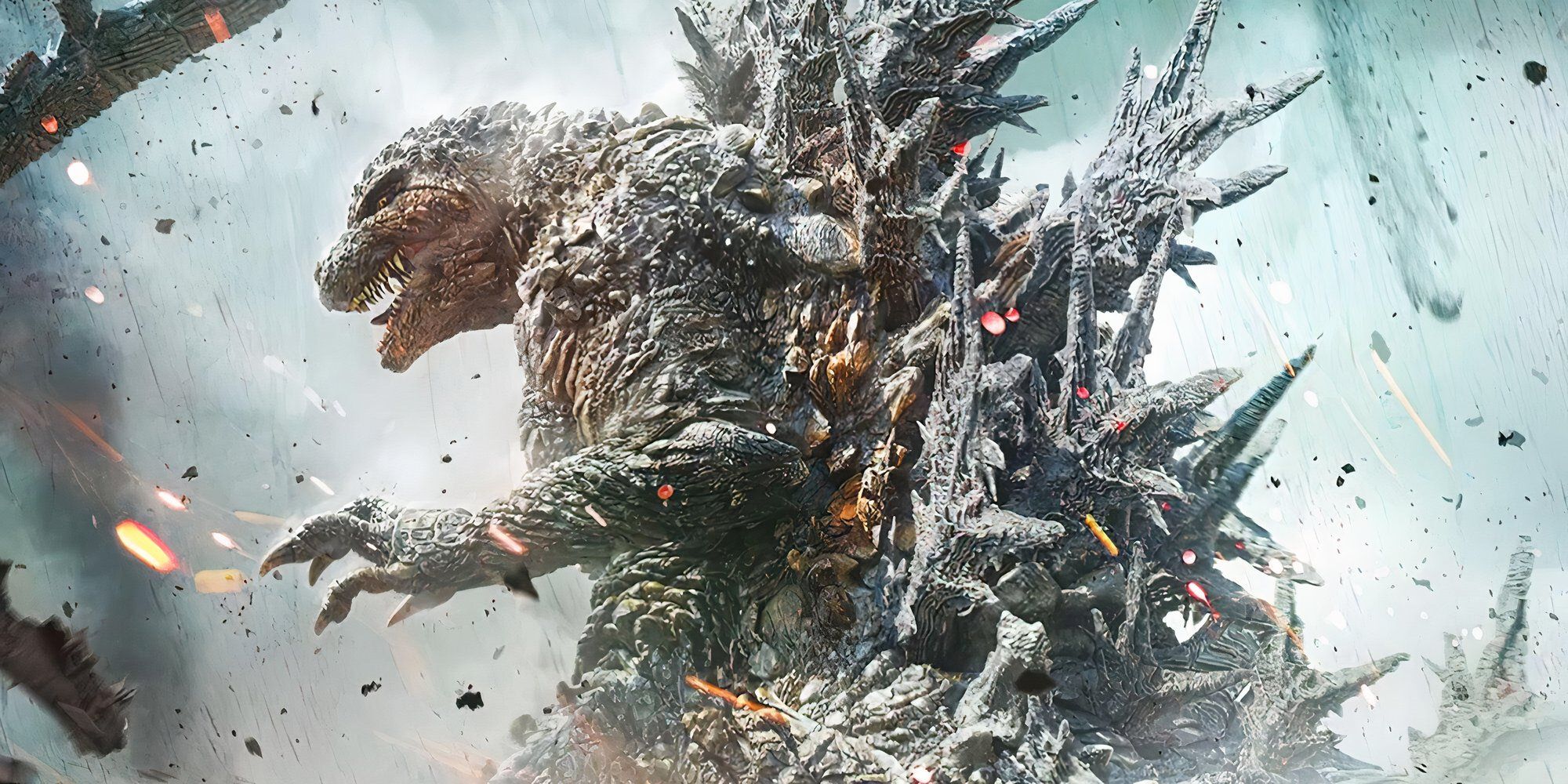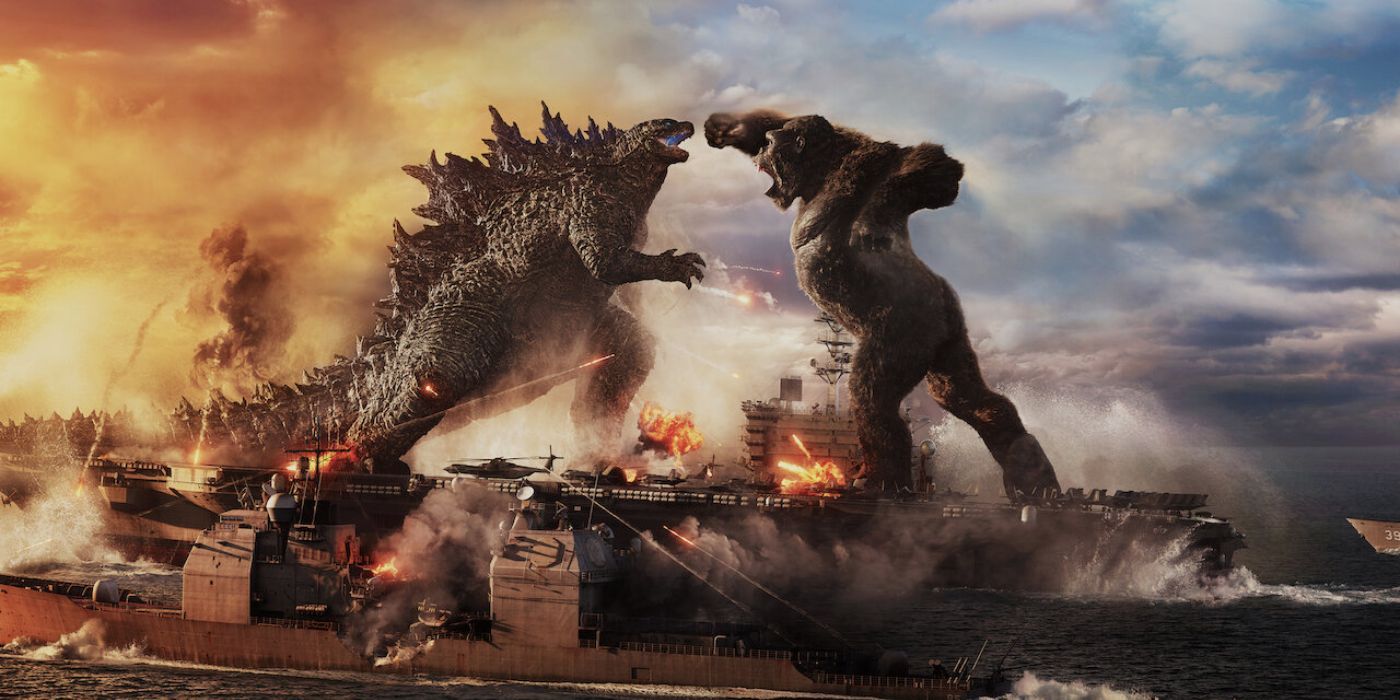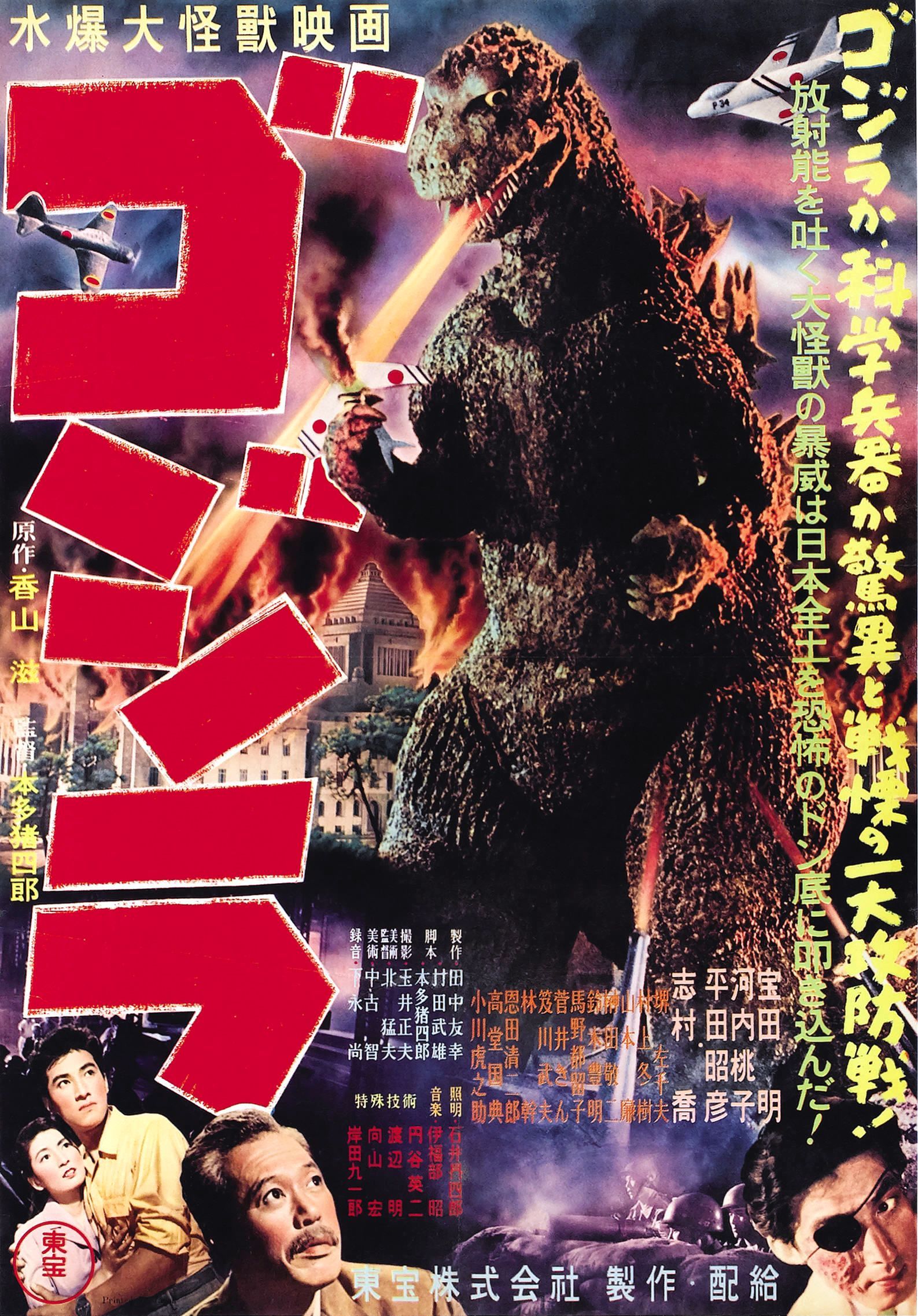As Nov. 3 and the 72nd anniversary of the original kaiju, Godzilla, get closer, it’s time to revisit the past and the future and look at where the world’s favorite monster is headed.
The big news is that Japanese director Takashi Yamazaki is not only working on a sequel to his 2024 success, Godzilla Minus One, but is also collaborating to create a Godzilla ride which will be opening this August at Seibuen Amusement Park in Saitama, Japan. It’s time to look at Godzilla’s future in both the Toho films and Legendary’s MonsterVerse.
The King of Monsters and the Birth of a New Genre

Image via Toho Studios
Godzilla first appeared in 1954 in the titular film, born from Japan’s attempts at recovering from two atomic bombs being dropped on Hiroshima and Nagasaki. Godzilla’s name in Japanese, Gojira, is a portmanteau of ‘gorilla’ and ‘whale’, with the Americanization being Godzilla. In Japanese films, Godzilla is the bane of Japan, regularly stomping over cities like Tokyo and Osaka, while in American films, beginning with the MonsterVerse in 2014, Godzilla has been presented as a Titan — as more of a protector of the Earth and its ecosystem, humanity included.
After the success of the original film, a new uniquely Japanese concept was created, the kaiju. Kaiju are typically large monsters like Ghidorah or Mothra. Some come from Earth and others from space, but all pose a danger to the world as well as to Godzilla’s title as King of the Monsters. Later films also followed Japan’s love of mecha, giant robots which are used in series like Neon Genesis Evangelion and Rahxephon, and often piloted by humans, to battle terrible threats that could destroy the human race. This led to some fascinating team-ups in later years as well as the holy trilogy of Shin movies which mix tokusatsu, kaiju and mecha by the visionary director Hideaki Anno: Shin Godzilla, Shin Ultraman and Shin Kamen Rider.
Given the shift from the suits to the suave CGI of the Reiwa-era films, Godzilla continues to be a cultural icon, not just in Japan but also around the world. Fans are globally excited about Godzilla Minus One, not just because of the release on the franchise’s 70th birthday, but also because it took the series back to its roots and won a vast number of awards both in Japan and globally as well. Godzilla Minus Two or whatever the sequel is eventually called, is coming; it’s currently ear-marked as being in pre-production.
Director Yamazaki also surprised fans with a ride at a Japanese theme park in Saitama. Godzilla The Ride: The Great Clash also recently had some footage leaked on Reddit which shows sections of the ride in which Godzilla and his mecha counterpart get to fight, while the ride moves around the battling kaiju. The ride opened this past week on Aug. 1 and promises a very up-and-close chance to see Godzilla again, whilst battling a new mecha menace. So does this mean Godzilla is our friend now? Well, the answer to that question is a tad more complicated than just a yes or no answer. It also relies on a little knowledge of Japanese culture and Shinto as well.
Angry Kaiju Versus Earth’s Sworn Protector

Image via Warner Bros. and Toho
At this year’s HYPER JAPAN in London, scholar Helen McCarthy directly asked artist and director Mahiro Maeda about the connection between Godzilla and the Shinto concept of kami, that they’re natural elements which are trying to persuade humanity to work within its principles rather than against them.
“All those elements are threats, it’s more of a macro view of things. They’re part of nature. Yes we’ve created some of them, but everything is interconnected. Another thing to touch on is the folklore and legacy, which you mentioned. They are rooted with this sense of fear that Japanese people have lived with throughout history. That stems from the many natural disasters we’ve experienced, like typhoons, volcanic eruptions and earthquakes.”
~ Mahiro Maeda
Kami, essentially, are divine forces. Most are venerated and can be worshiped at shrines in people’s homes (kamidana) as well as across the country (as well as in other sacred spaces in Canada, San Marino, the UK, Hawaii and Florida). Visitors purify themselves in running water, then offer a coin at the shrine and pray. Many shrines will venerate specific deities, while others will enshrine a natural element like a river, waterfall or an ancient tree.
Humans, as a part of the Earth, can also become kami, such as Sugawara no Michizane, who is now better known as Tenjin, the kami of scholars, and go-to for students studying for exams. There’s also the controversial Yasukuni Shrine in Tokyo, which enshrines the war dead as well as many people convicted of and executed for war crimes. Within Shinto there is also a concept called Goryou Shinko, in which a spirit who has been unjustly treated has the power to inflict natural disasters upon the world. Japan has three very important ones: the Three Great Onryo: Sugawara no Michizane, along with Prince Shoutoku and Taira no Masakado, now regarded as the guardian of Tokyo itself. Film fans will recognize the term: Sadako Yamamura of Ringu is an onryo and, in recent years, the term has come to mean a female ghost; in reality, it’s actually any gender of vengeful spirit.
By this logic, whatever his origins, Godzilla — as seen in his original Japanese form — is an onryo. He’s a creature twisted by nuclear power, warped into a massive beast sustained by nuclear radiation, but also a living example of how humanity has done irreparable damage to the Earth by crafting such terrible weapons. As a result, the Toho version (from the original, to the warped creature in Shin Godzilla, to Yamazaki’s pared-back version seen in Godzilla Minus One).
Yet the version in the MonsterVerse feels almost like he is now a venerated protector of both humanity and the Earth. He has been literally crowned the ‘King of Monsters’ by humans and, outside an actual enshrinement, this appears to have turned him completely from the angry kaiju of Toho to a venerated kami who now wanders the world protecting the planet from new threats, like Ghidorah, to older ones, like the ice Titans seen in Godzilla Versus Kong: The New Empire.
When Does The Next Godzilla Movie Come Out?
The next MonsterVerse movie: Godzilla x Kong: Supernova, is penciled in for release in March 2027. However, the shift from Godzilla versus movies, to Godzilla x Kong, also cements the beloved giant monkey as a Western counterpart to Godzilla. Godzilla himself has been demonsterfied over the years, going from a nuclear nightmare ready to blitz San Francisco in 2014, to catnapping in the Coliseum, as well as coming when he was called to save the world from newer mech monsters like the MonsterVerse’s version of MechaGodzilla.
The last film, The New Empire, made it clear both Titans were on the same level, with Godzilla’s territory being the Earth, while Kong gets the mysterious Hollow Earth below. They are now no longer rivals for the title of King of the Monsters but partners in a shared desire to protect the earth. It’s clear Godzilla and Kong will be the go-to Titans for western films within the franchise.
Godzilla is very much alive, be it the TohoVerse or the MonsterVerse. He has fans around the world, a new generation who grew up with both the exported Japanese films and Legendary’s offerings and who want to see both sides of the beloved monster, be he humanity’s friend or foe. Godzilla lives, and the world is all the better for new chances to see Japan’s strangest export facing off against foes.

Created by
Tomoyuki Tanaka
First Film
Godzilla (1954)


AloJapan.com